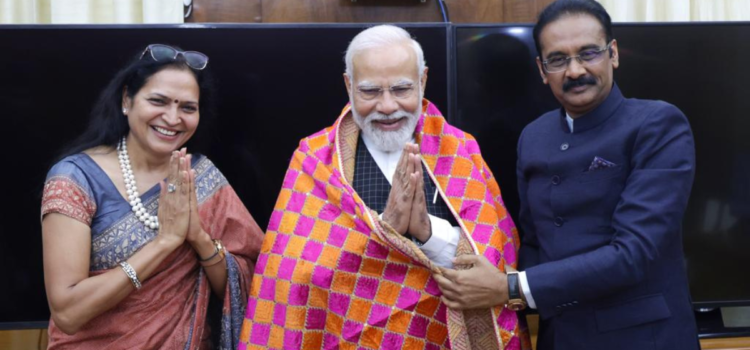Securing your dream job in India’s competitive market demands more than just a good degree and resume. Standing out for coveted placements, especially as a fresh graduate, requires strategically tailoring your application to directly answer the company’s needs. Reverse engineering your application is the key.
The landscape paints a challenging picture. The 2022 India Skills Report reveals that only 45.9% of Indian graduates are deemed employable across industries, highlighting fierce competition for quality jobs. Understanding how to set yourself apart is crucial.
Unlocking Your Dream Job Search Secrets: Research and Customization for Success
Researching your target employers unlocks your job search secrets. Deep dive into their websites, recent news, and social media presence. This demonstrates genuine interest and helps you speak their language. For instance, a study by Aspiring Minds revealed that 80% of Indian engineers are not fit for any job in the knowledge economy and only 2.5% of them possess tech skills in Artificial Intelligence (AI) that the industry requires. Identifying in-demand skills for your field and strategically upskilling gives you an immediate edge.
Customization is king. Tailor your resume and cover letter to highlight keywords and skills mentioned in the job description. Quantify your accomplishments. Don’t just say “managed social media accounts,” showcase the metrics you achieved, like “increased follower base by 30% and boosted engagement by 25% through targeted campaigns.” Remember, a LinkedIn survey found that 72% of hiring managers seek applicants with skills tailored to their specific needs.
Don’t just tell, show. Craft your application to emphasize how you applied those skills in projects, internships, or even student leadership roles. Supplement your traditional application with online portfolios showcasing your work, whether it be code samples, designs, marketing campaigns, or impactful research papers. Top companies want to see proven skills. PMI India’s survey reveals that recruiters seek data analytics, critical thinking, and problem-solving abilities.
Personal branding and follow-up are crucial in a crowded market. Share your insights and expertise online, contribute to industry forums – and establish yourself as a thought leader. Additionally, follow up strategically with each company post-application to reiterate your interest and unique value-add.
Beyond just submitted qualifications, today’s recruiters want to see that you thoroughly understand their specific needs and can directly contribute to solving their challenges.
Reverse engineering your dream job application involves analyzing the company, role, and required skillsets, then strategically positioning yourself as an ideal culture fit and solution.
Here are 5 key steps to crack the placement code:
Research Extensively
Leverage all available information to deeply understand your target company’s mission, values, goals, pain points, and specific skill needs. Sources like annual reports, leadership interviews, job descriptions, Glassdoor reviews, and employees on LinkedIn unlock insider intel. This data enables you to tailor your application to their priorities.
Upskill Relevantly
Identify any skills gaps between your current abilities and the company’s needs. Be honest about deficiencies and proactively upskill through online courses, certifications, student projects utilizing new technologies like analytics and AI. Investing to acquire in-demand abilities makes you an asset.
Customize Completely
With research learnings in mind, ensure every aspect of your application directly speaks to the company’s requirements using their language. Beyond just listing generic qualifications, contextualize your experience, projects, and capabilities to showcase how you can impact their objectives.
Showcase Tangibly
Supplement your resume and cover letter with tangible samples of your work through online portfolios, GitHub, design PDFs, etc. For developers, provide code samples reflecting complex projects. Marketers can share campaign results and testimonials. Such concrete evidence of abilities boosts credibility.
Follow Up Frequently
After applying, continue nurturing relationships by sharing relevant content with recruiters on LinkedIn and scheduling short update calls to reinforce your fit and interest. Such proactive engagement builds familiarity and gets you noticed.
The Power of Personal Branding
In today’s digital age, beyond just your application, establishing a strong personal brand as a thought leader provides additional leverage to stand out amongst the crowd. Strategically sharing insights, perspectives, and expertise through platforms like LinkedIn, industry forums and publications helps position you as an authority. This convinces recruiters you can drive value from day one. Here are 3 branding tips:
Identify your niche area of passion where you can provide unique perspectives. Consistently create and share long-form posts, videos, presentations etc centered around this domain.
Actively participate in community discussions and conferences, provide helpful commentary, and establish yourself as a subject matter expert.
Proactively reach out to company leaders and hiring managers via LinkedIn messages and emails, introducing your capabilities and interest in contributing. The cumulative impact of such organic outreach and value-add makes you highly visible on their radar beyond just another application.
Placement Success Blueprint
The Indian job market presents unique challenges as well as opportunities for driven graduates. By reverse engineering your dream job applications, you go beyond just submitting your qualifications – you demonstrate you’re a solution to their specific needs. Research, customization, showcasing tangible skills, proactive follow-up, and strong personal branding are your key strategies for crafting a standout application.
Here is a 5-step blueprint to crack your placement code:
- Research the company, role and skills required thoroughly to identify needs
- Upskill yourself proactively to address any gaps
- Fully customize resumes and portfolios to match their priorities
- Follow up frequently post-application to reinforce interest
- Establish social media personal brand as an industry expert
With this strategic approach, you can confidently position yourself for placement success, landing a fulfilling role straight out of college despite fierce competition. The proof lies in showcasing applied skills, not just stating qualifications. Spend time to deeply understand what each employer truly seeks in your field, then engineer the narrative and evidence demonstrating you’re the best fit.
Landing your dream job straight out of college amidst an ocean of applicants requires mastering the art and science of crafting a standout application. Set yourself apart by reverse engineering what the company specifically needs and wants, then strategically align your candidacy to those solutions. Supplement credentials with demonstrated ability. Follow up diligently. And amplify your visibility through consistent personal branding. Do this, and you’re well on your way to placement success on Day One post-graduation!








